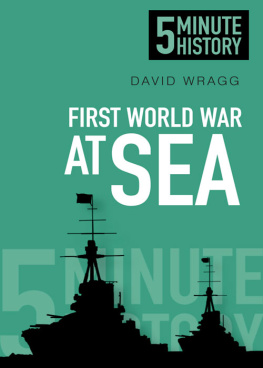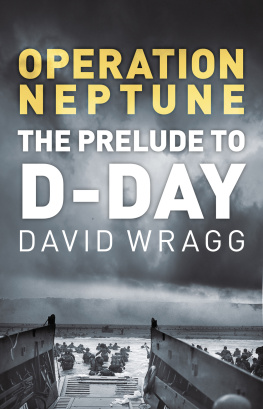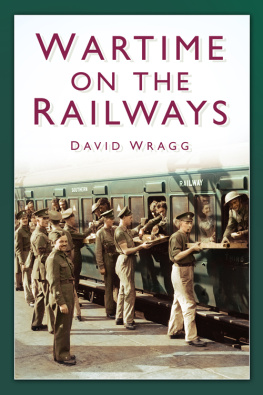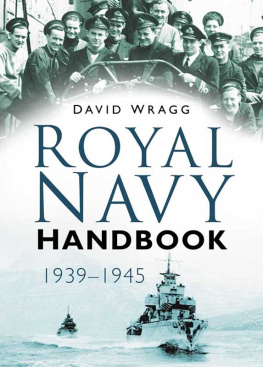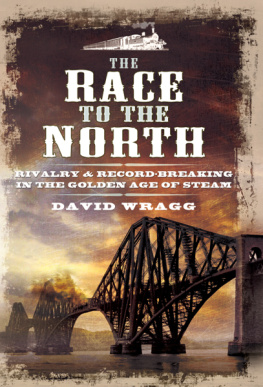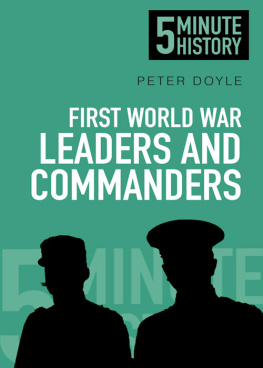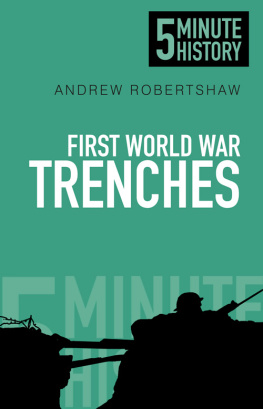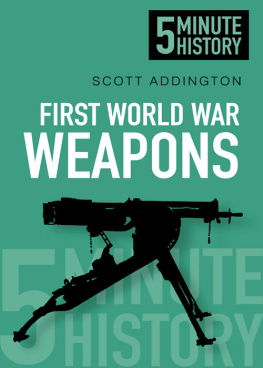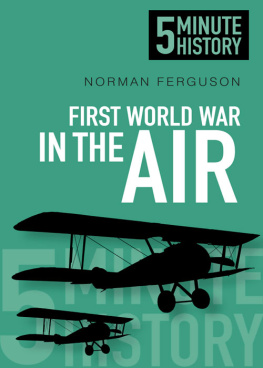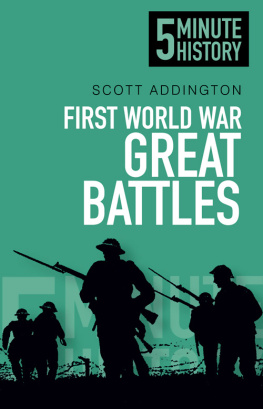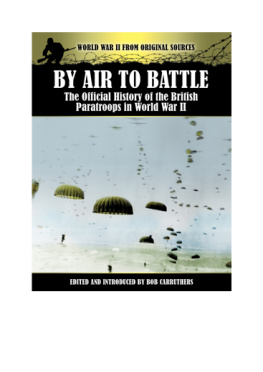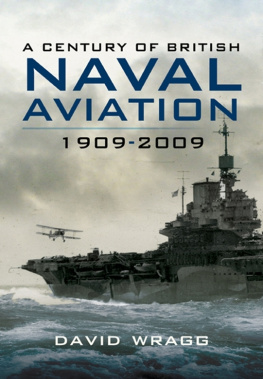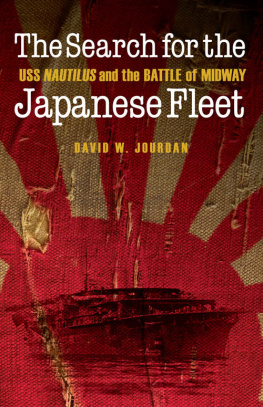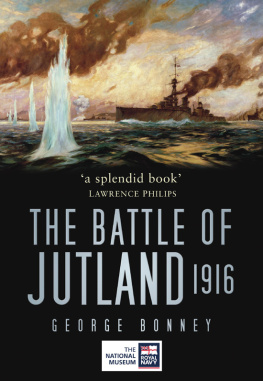
CONTENTS
THE ROYAL NAVY in 1914 was the largest in the world, mainly because for many years the service had adopted the so-called two-power standard, meaning that it had to be equal to the combined strength of any other two fleets in the world. The United States Navy was still developing, as was the German Navy (the Kaiserliche Marine ), largely because Germany was itself a new creation and was just beginning to evolve from being a Continental power to possess greater ambitions.
Yet, all was not as it should have been. As big as it was, the Royal Navy was deployed around the globe protecting the largest empire the world had ever seen. Not for nothing did one of its admirals describe it as Weak everywhere, strong nowhere. It had gone almost a century without major fleet actions and become more concerned with peacetime manoeuvres, and the initiative allowed to the commanding officers of warships in Nelsons day (especially smaller warships) had been suppressed.
Many in the Admiralty believed that experiment and innovation should be avoided. The Royal Navy had also been neglected by pre-war Liberal governments, allowing the United Kingdoms greatest rival in Europe Germany to begin to close the gap between the two navies.
On the other hand, the Royal Navy had not turned its back on progress. It had already adopted the submarine, and enthusiastic young officers were well to the fore in learning to fly and experiment with the aeroplane. The Royal Navy was quick to embrace the steam turbine, which not only provided more power than piston steam engines, but lowered the height of the engine room, allowing heavier armament and armour. This led to the first all-big-gun battleship, HMS Dreadnought , completed in 1906. From that year onwards, all battleships were classified as being either Dreadnought or pre-Dreadnought. The problem that this gave the Royal Navy was that overnight its lead in major warships was cancelled out and a race began to see which country could build the most Dreadnought battleships before war broke out in Europe. The Imperial German Navy received its first Dreadnought battleship in 1907 a sign of what was to come.
THE ROYAL NAVY
IN 1914
IN OCTOBER 1904, Admiral Sir John Fisher became First Sea Lord, the service head of the Royal Navy, while the political head was the First Lord of the Admiralty. The Second Sea Lord was responsible for personnel and the Third Sea Lord was Controller of the Navy and responsible for warship design and support. Fisher had held both these posts earlier in his career.
Fisher was one of the great reforming admirals. He was what today would be described as a technocrat, rather than a fighting admiral, although he was no engineer and at the time engineers were treated with disdain, despite half a century of steam power. A controversial figure, Fisher incurred the wrath of many senior officers by bringing home from the various fleets, squadrons and overseas stations many older ships, which, in his words, could neither fight nor run away. Many of the ships already at home and in reserve were in a similar condition and were scrapped. His predecessors had kept as many ships as possible, confusing sheer numbers with efficiency and having a fleet that had quantity rather than quality.
It was very much a spit and polish navy. Smartness and cleanliness were more highly regarded than fighting efficiency; one battleships watertight doors had been polished so much that they were too thin to be effective. Gunnery practise was neglected because it made the ships dirty and it was not unknown for practice munitions to be quietly dumped over the side.
Yet, ships could not avoid becoming dirty when they had to recoal, which took some time as a battleship required some 3,0003,500 tons of coal, loaded largely by hand, apart from a hoist lifting the coal out of a barge or collier. Working together, the ships company could handle some 300 tons per hour. Coaling was necessary every seven to ten days, with HMS Dreadnought , regarded as being economical, needing 300 tons of coal daily. Of course, oil would have been a more efficient fuel and much easier to refuel, but the United Kingdom had scant oil resources, whereas coal was abundant. The new Queen Elizabeth-class battleships were amongst the first to be oil-fired from the start.
In 1914, the Royal Navy had 147,667 men, but mobilisation raised this to just over 201,000, and by 1917 the number had risen to 450,000. By 1918, it also had 7,000 women in the newly formed Womens Royal Naval Service (WRNS), more commonly known as the Wrens.
DID YOU KNOW?
The contract for supplying the oil needed by the Royal Navy was awarded to British Petroleum (BP) in return for the state taking a half-share in the company.

I WAS THERE
Painting the ships sides and superstructure was an evolution that usually had to be done in a day. With one captain it would be every six or seven weeks, with another every six months Every brush you lost, you paid for. So you hung them round your neck.
James Cox, a pre-1914 naval rating

At the outbreak of the First World War, the Royal Navy had sixty-nine capital ships: twenty Dreadnought and forty pre-Dreadnought battleships and nine battlecruisers. It also had forty-six cruisers and sixty-two light cruisers, twenty-eight gunboats, eleven sloops, 215 torpedo-boat destroyers, 106 torpedo boats, seventy-six submarines, a seaplane carrier and seven small minelayers. The light cruisers were no bigger than a Second World War destroyer, while the torpedo-boat destroyers, of less than 1,000 tons displacement, were the predecessors of the much larger modern destroyer. Despite its size, the Royal Navy lacked minelayers, minesweepers, night gunnery systems, anti-airship weapons, anti-submarine equipment and tactics, efficient torpedoes and safe harbours.
DID YOU KNOW?
One of the ships used for pre-war trials with seaplanes was a light cruiser, HMS Hermes , but she was converted back on the outbreak of war and all wartime seaplane carriers were converted merchant vessels.

I WAS THERE
I Was There We get up at 6.30, and have to take our dip in the plunge bath and dress by 7.00, when we begin work till 8.00. At 8.00 the bugle blows Cease Fire and we are marched into the mess room. At 9.00 we have prayers and divisions (that is, fall in) and off we march to work, which varies
Douglas King-Harman, an officer cadet at Osborne,aged 12/ years

The main naval bases were at Chatham (sometimes referred to as the Nore Command), Portsmouth and Plymouth. There were historical reasons for the location of these, as wars had been fought against the Spanish, French and the Dutch. However, as war with Germany grew more likely, a new base was started at Rosyth, on the north bank of the Firth of Forth, but progress was slow, as many senior officers thought the location too far from the open sea. Locating a base further north was difficult as the railway lines to the north of Scotland were single-track. Nevertheless, a forward base was built at Invergordon on the Cromarty Firth, north of Inverness, which was provided with a floating dock. Further north still, an anchorage was created at Scapa Flow, off the mainland of Orkney, which had to be resupplied by sea. A shortage of funds further delayed the completion of these bases.
Next page
